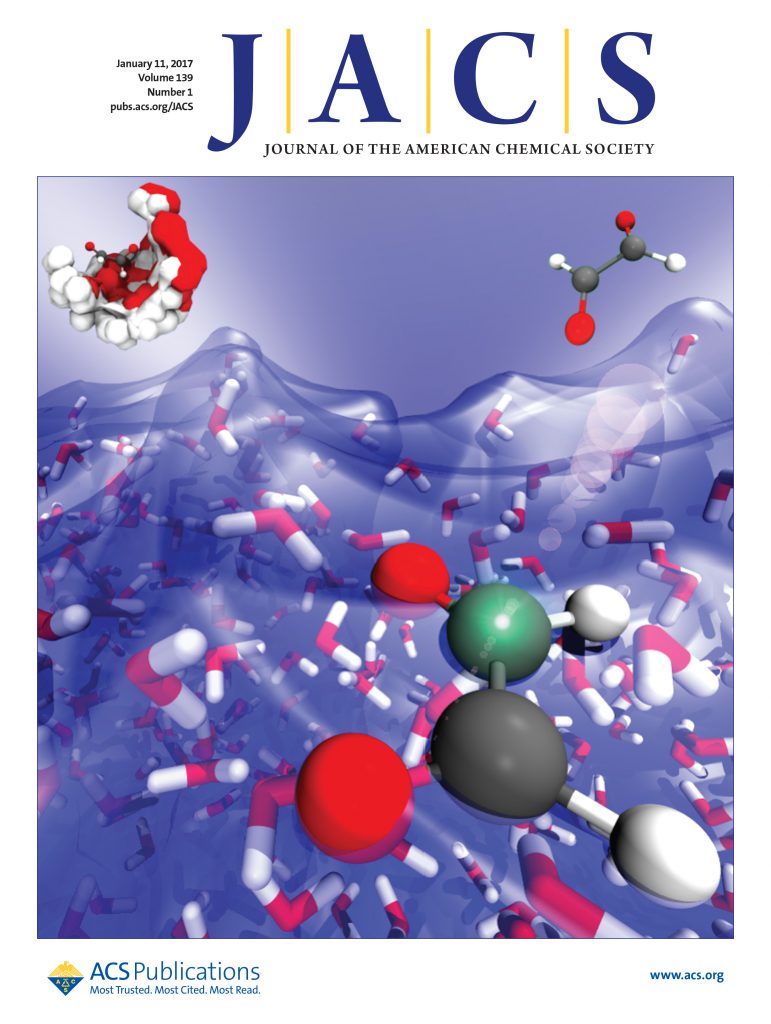自顶向下离子迁移质谱揭示疾病相关的α -1-抗胰蛋白酶构象集合
IF 15.6
1区 化学
Q1 CHEMISTRY, MULTIDISCIPLINARY
引用次数: 0
摘要
蛇形蛋白超家族成员的突变体可以经历非淀粉样蛋白聚集形成与疾病相关的聚合链。这是典型的Z α -1抗胰蛋白酶(Glu342Lys),它在肝细胞内作为聚合物积累,导致肝硬化。我们已经使用离子迁移率质谱和电子捕获解离直接观察和表征聚合过程中形成的新中间体。我们的数据与单体构象的集合一致,但保持在部分错误折叠的亚稳态,其中c端约12%的分子被移位。将这些技术应用于从人肝脏中分离的Z α -1抗胰蛋白酶聚合物,发现了一个与分子间c端结构域插入介导的聚合物最一致的分子物种。这些发现建立了以前未观察到的致病性结构变化的进展,从而扩展了α -1-抗胰蛋白酶聚合的机制。他们还证明了天然自顶向下离子迁移质谱法在表征从人体组织中分离的错误折叠中间体和蛋白质方面的优势。本文章由计算机程序翻译,如有差异,请以英文原文为准。

Top-Down Ion Mobility Mass Spectrometry Reveals a Disease Associated Conformational Ensemble of Alpha-1-antitrypsin
Mutants of members of the serpin superfamily can undergo nonamyloid aggregation to form polymeric chains that are associated with disease. This is typified by Z alpha-1-antitrypsin (Glu342Lys) that accumulates as polymers within hepatocytes to cause cirrhosis. We have used ion mobility mass spectrometry and electron-capture dissociation to directly observe and characterize novel intermediates formed during polymerization. Our data are congruent with an ensemble of conformations that are monomeric but maintained in a partially misfolded metastable state in which ∼12% of the molecule at the C-terminus is displaced. The application of these techniques to Z alpha-1-antitrypsin polymers isolated from human liver revealed a molecular species most consistent with a polymer mediated by an intermolecular C-terminal domain insertion. These findings establish a previously unobserved progression of pathogenic structural changes and thereby extend the mechanism of alpha-1-antitrypsin polymerization. They additionally demonstrate the strengths of native top-down ion mobility mass spectrometry in characterizing misfolding intermediates and proteins isolated from human tissue.
求助全文
通过发布文献求助,成功后即可免费获取论文全文。
去求助
来源期刊
CiteScore
24.40
自引率
6.00%
发文量
2398
审稿时长
1.6 months
期刊介绍:
The flagship journal of the American Chemical Society, known as the Journal of the American Chemical Society (JACS), has been a prestigious publication since its establishment in 1879. It holds a preeminent position in the field of chemistry and related interdisciplinary sciences. JACS is committed to disseminating cutting-edge research papers, covering a wide range of topics, and encompasses approximately 19,000 pages of Articles, Communications, and Perspectives annually. With a weekly publication frequency, JACS plays a vital role in advancing the field of chemistry by providing essential research.

 求助内容:
求助内容: 应助结果提醒方式:
应助结果提醒方式:


